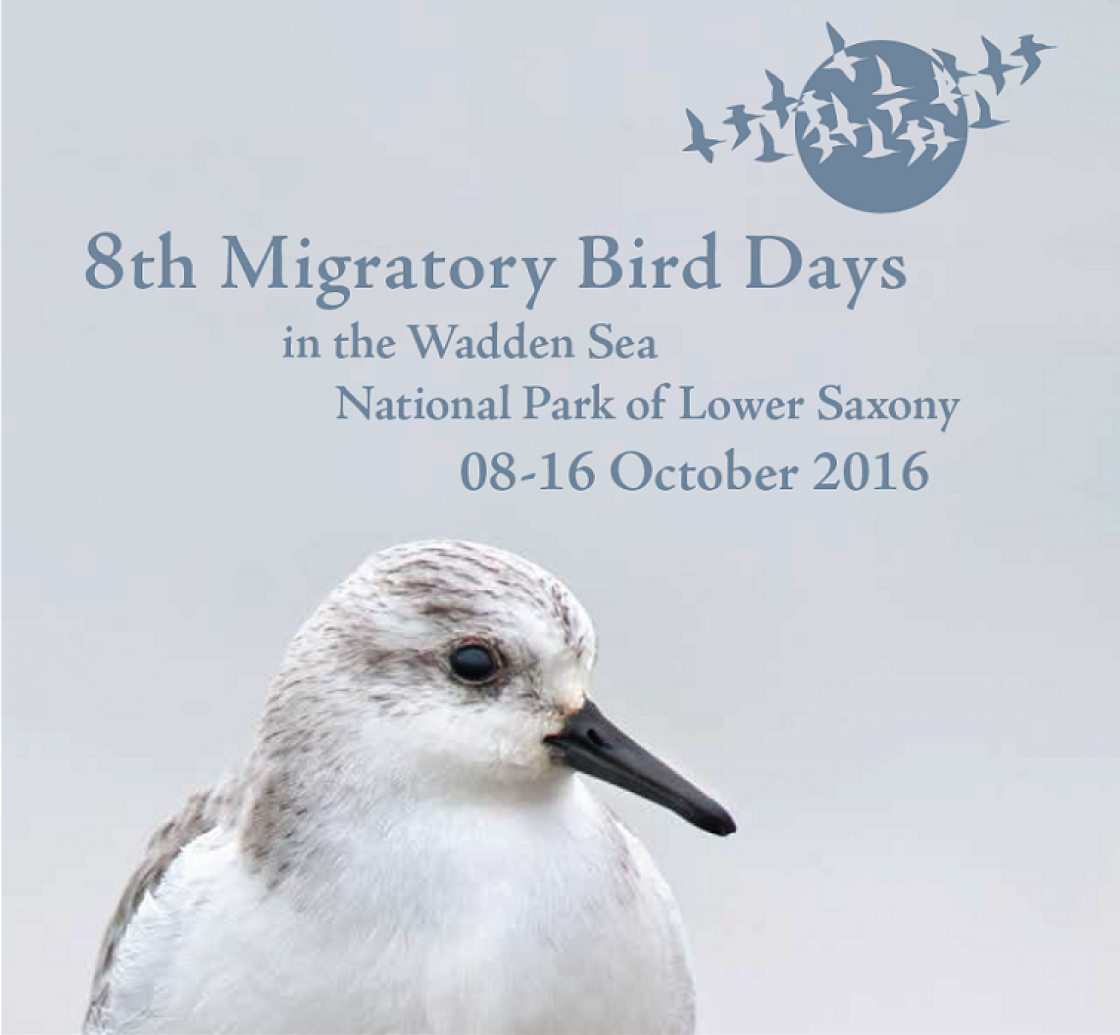You are here
The Wadden Sea Celebrates Migratory Birds

Bonn, 05 October 2016 - The Migratory Bird Days are being celebrated from 8 to 16 October in the Wadden Sea National Park of Lower Saxony. More than 250 events will be organized along the coast of the North Sea and the Frisian Islands.
Since 2009, the Migratory Bird Days have been celebrated in the Wadden Sea. Inspired by the annual World Migratory Bird Day, which was launched by CMS and AEWA in 2006, the aim is to raise awareness about the importance of migratory birds and inform the public about measures of how to protect them. This year’s Migratory Bird Days offer events, such as bird walks and cycle tours, a Bird Fair, a drawing competition for children, art exhibitions and concerts. Some events will particularly be targeted at children, since educating the young is crucial to making future generations aware of environmental issues and the responsibility of human beings in protecting our ecosystems.
A cycle tour one early morning on the island of Langeoog will give participants the chance to spot birds that migrate in the night and rest on the island in the morning. A bird fair will be organized with music, games and talks on avian research and the conservation of birds. There will be a drawing competition for children, followed by an exhibition of their artwork. This creative activity is aimed at educating children about migratory birds by making them draw what birds in the Wadden Sea are feeding on.
 So vital is the Wadden Sea to the survival of migratory birds that when it was placed on the World Heritage List in 2009 (extended in 2014), UNESCO called upon the Wadden Sea States to strengthen their cooperation with other countries on the African-Eurasian Flyways. These include the East Atlantic Flyway, a bird migration system linking breeding and wintering grounds as diverse as the Arctic tundra and the Banc d’Arguin in Mauritania and stretching from northern Russia to southern Africa.
So vital is the Wadden Sea to the survival of migratory birds that when it was placed on the World Heritage List in 2009 (extended in 2014), UNESCO called upon the Wadden Sea States to strengthen their cooperation with other countries on the African-Eurasian Flyways. These include the East Atlantic Flyway, a bird migration system linking breeding and wintering grounds as diverse as the Arctic tundra and the Banc d’Arguin in Mauritania and stretching from northern Russia to southern Africa.
Over 6 million birds can be present in the Wadden Sea at the same time and an average 10-12 million pass through it each year. As the world’s largest unbroken system of intertidal sand and mudflats, the area is an absolutely critical stopover site in a network of other key sites for migratory birds that use the East Atlantic Flyway. In spring migratory birds use the site to rest and refuel on their way to the Arctic breeding grounds. In autumn the Wadden Sea serves as a stopover on their journey to their wintering grounds in West Africa.
